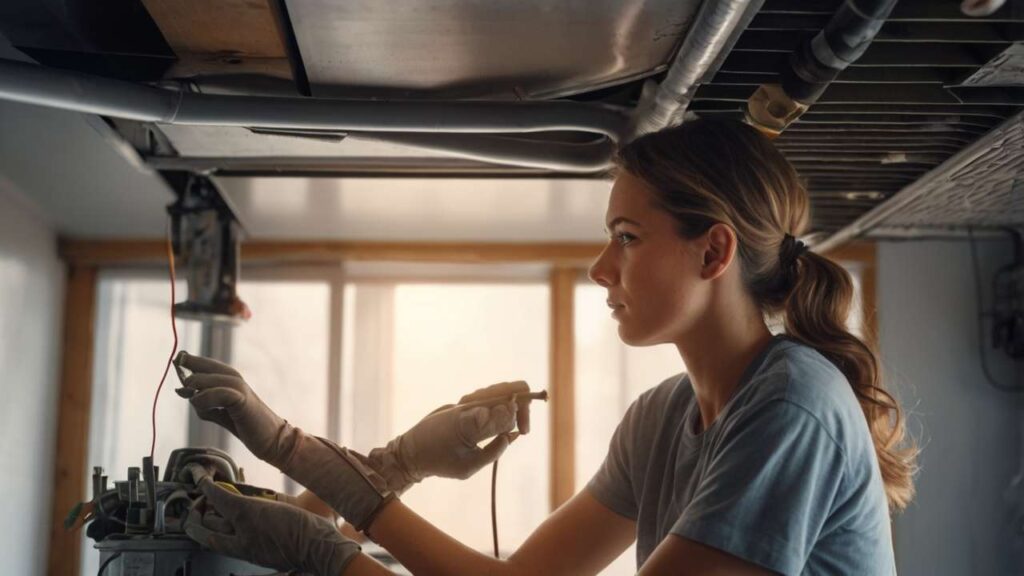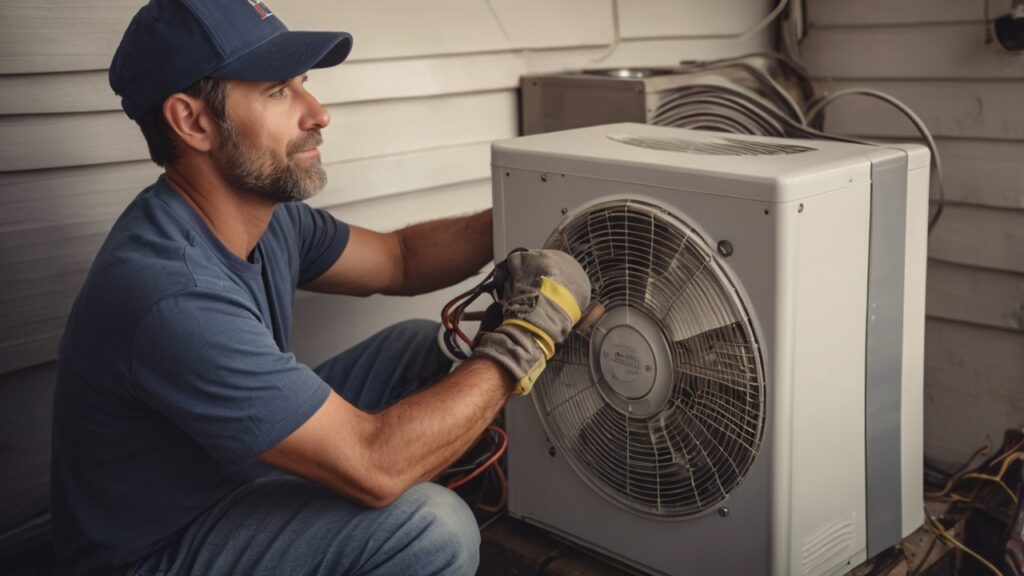It’s funny how homeowners (me included, at one point) tend to think only about the air conditioner when talking about cooling the house. Yet, the secret player that’s often ignored is right above our heads: the attic. And even more overlooked? The attic fan. To be fair, the question “how does an attic fan work?” doesn’t sound exciting at first. But once you realize how much it contributes to reducing cooling costs, improving attic ventilation, and extending the life of your AC, it suddenly feels like discovering a hidden hack you wish you’d known earlier.
The truth is, attic fan benefits aren’t always shouted about by HVAC companies or roofing contractors. A lot of people still think attic heat removal is just “something nice to have” rather than a core part of home efficiency. That’s a mistake. And honestly, ignoring it could mean you’re wasting hundreds of dollars every summer.
This post takes a deep dive into attic fans, the difference between a whole-house fan vs attic fan, and why investing in the right setup—whether it’s roof fan installation, improving proper ventilation, or addressing small issues like fan motor noise—might change how comfortable your summers feel.
If you want to see the bigger picture of efficiency, check out our HVAC Companies Recommendations in North Carolina. But here, we’re zooming into the attic.
How Does an Attic Fan Work?
Put simply, an attic fan works by pulling hot, stale air out of your attic and replacing it with cooler outdoor air. Imagine your attic like a car parked under the sun. If you shut all the windows, the temperature skyrockets, making everything unbearable. That’s exactly what happens in your attic without proper ventilation.
Most attic fans are powered either by electricity or solar energy. A trusted HVAC professional will tell you the mechanics are straightforward but powerful: a motor-driven fan connected to your attic vents draws air out, keeping the attic temperature much closer to the outside temperature.
Here’s where it gets interesting: because the attic acts as a giant heat trap, cooling the attic with a fan indirectly cools the rest of the house. The AC doesn’t have to work overtime, meaning saving money on AC bills isn’t just a marketing line—it’s a lived reality.
Attic Fan Benefits You Don’t Hear Enough About
- Reducing Cooling Costs
A study from the U.S. Department of Energy shows that homes with efficient attic ventilation can save anywhere from 10–30% on cooling bills. That’s not pocket change. I personally noticed about a $40 drop in my summer energy bills after installing one. - Protecting Your Roof
Excessive attic heat doesn’t just make you sweat—it cooks your roof from the inside. Shingles deteriorate faster, underlayment gets brittle, and before you know it, you’re facing expensive repairs. Reliable roofing contractors often mention attic fans during roof inspections for this very reason. - Comfort Beyond Temperature
Ever had a home where upstairs bedrooms are always hotter than downstairs? Attic heat removal helps balance that. The fan pulls away the trapped hot air, making the entire house feel more even. - Improved Air Quality
Proper ventilation prevents moisture buildup, which means less mold growth. That’s not only healthier but also keeps your insulation intact. Nobody likes the smell of damp fiberglass.
Whole-House Fan vs Attic Fan: What’s the Difference?
This comparison is often confusing, but it’s simple once you break it down.
- Whole-House Fan: Installed in the ceiling of the top floor, it pulls cool outside air into the house and exhausts warm air through attic vents. It’s great for overall house cooling, especially in regions with cooler nights.
- Attic Fan: Installed directly in the attic, it only ventilates the attic space itself. It doesn’t pull air into living spaces but reduces attic temperature, indirectly helping your AC system.
So, if you live somewhere like North Carolina where summers can get brutally hot but evenings don’t always cool down enough, an attic fan may be the more practical choice. Reliable HVAC experts often recommend pairing them, but the attic fan is usually the cost-effective first step.
Real Case Example: A Hot Summer in Raleigh
Let me give you a real-world story. A family in Raleigh had constant complaints about their upstairs bedrooms being unbearable at night. They had already spent $6,000 upgrading their AC to a “more powerful unit.” Still no relief.
Finally, after an inspection, the problem wasn’t the AC at all—it was the attic. Temperatures were hitting 145°F up there, radiating back into the bedrooms. After installing a $600 attic fan with a thermostat and humidity sensor, the upstairs cooled dramatically, and the AC finally worked as intended.
The family’s words? “We wish someone had told us this before.”
Common Problems and Repairs with Attic Fans
Even the best attic fans aren’t perfect. Here are a few common issues you might run into, plus how they’re typically fixed:
- Fan Motor Noise: Usually caused by a failing motor bearing. Replacement motors are affordable ($50–$120), and an expert technician can swap them in under an hour.
- Poor Ventilation: Sometimes it’s not the fan but blocked soffit vents. Dust, insulation, or even a bird’s nest can stop airflow. Clearing them out often solves the issue.
- Short Cycling: A fan that turns on and off too quickly may have a faulty thermostat. Replacing it with a digital thermostat or smart controller usually fixes this.
- Roof Leaks Around Installation: This is where professional, trusted roof fan installation really matters. Bad flashing work around the fan can cause leaks.
Expert Opinion on Attic Fans
HVAC specialist Mark Daniels (with 20+ years in the field) once said in a homeowner’s forum: “I’ve lost count of how many times people think they need a bigger AC, but all they really needed was better attic ventilation. An attic fan is the unsung hero of summer comfort.”
That resonates with me. Too often, people throw money at new AC systems without solving the root problem.
Future Blog Development Ideas
To make this attic fan discussion part of a bigger conversation on home efficiency, here are contextual future blog topics that naturally connect:
- Solar-Powered Attic Fans: Are They Worth It or Just a Gimmick? (exploring eco-friendly alternatives)
- How Insulation and Attic Fans Work Together for Maximum Comfort (showing the synergy between airflow and thermal barriers)
- DIY vs Professional Roof Fan Installation: What You Should Know Before Climbing the Ladder (practical advice, pros and cons)
- Attic Fans and Indoor Air Quality: The Overlooked Link (tying ventilation to long-term health benefits)
- The Seasonal Guide: Preparing Your Attic Fan for Winter and Summer (maintenance-focused content, connecting to preventive HVAC care)
Each of these extends the conversation without feeling forced, and they integrate naturally with the main HVAC content hub at ProServiceTips.
Related Reads You Shouldn’t Miss
- The Ultimate Guide to HVAC Preventive Maintenance
- Breathing Easier: Improving Indoor Air Quality with Your HVAC System
- The Efficiency Question: How to Choose the Right HVAC System for Your Home
- Beyond the AC: The Overlooked Role of Attic Fans in Home Comfort (this article)
- Don’t Delay: Why Ignoring Small HVAC Issues Costs You More in the Long Run
FAQs
Q1: How does an attic fan save money on AC costs?
By lowering attic temperatures, attic fans reduce the heat load on your air conditioner. That means the AC doesn’t run as often or as hard, directly cutting down your electricity bills.
Q2: Is a whole-house fan better than an attic fan?
Not necessarily. A whole-house fan cools the living spaces directly, but it requires cool outdoor air to work effectively. An attic fan, on the other hand, targets attic heat removal. They solve different problems and can be complementary.
Q3: Can I install an attic fan myself?
Technically, yes. But roof penetrations are tricky—done wrong, they lead to leaks. That’s why most homeowners choose professional, reliable installation to ensure proper flashing and wiring.
Final Thoughts & Call to Action
Attic fans may not have the “flash” of a new AC unit, but their benefits are impossible to ignore once you experience them. They quietly protect your roof, balance your home’s comfort, and—most importantly—help you save money on AC bills.
If you found this article useful, don’t keep it to yourself. Use the share buttons below and pass it along to your friends or family who are always complaining about summer heat. Who knows? You might just save them from another sweaty night upstairs.



